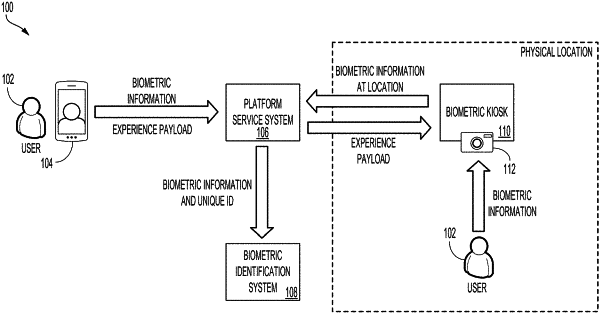| CPC G06Q 20/40145 (2013.01) [G06Q 20/18 (2013.01); G06Q 30/0603 (2013.01); G06Q 30/0631 (2013.01); G06Q 30/0643 (2013.01); G06V 40/168 (2022.01); G06V 40/172 (2022.01)] | 17 Claims |

|
1. A method of managing one or more experience payloads associated with one or more users, comprising:
obtaining an experience payload and first biometric information of a user, wherein the experience payload includes a product selected by the user during a web browsing experience at a website and available at a physical location associated with the website, and wherein the first biometric information of the user is obtained from a first computing device;
obtaining an indication that the user opted to translate the web browsing experience to the physical location by associating the first biometric information with the experience payload;
generating one or more characteristic representations of the user using the first biometric information;
associating the one or more characteristic representations of the user with the experience payload based on the indication;
obtaining a request from a second computing device to obtain the experience payload, wherein the second computing device is located at the physical location associated with the website, and wherein the request includes second biometric information obtained by the second computing device from the user at the physical location;
determining that the second biometric information corresponds to the one or more characteristic representations;
determining that the user opted to translate the web browsing experience to the physical location when the user arrives at the physical location based on the indication;
providing the experience payload to the second computing device based on the determination that the user opted to translate the web browsing experience to the physical location, the experience payload causing the second computing device to perform operations associated with the user at the physical location; and
providing a profile of the user to the second computing device together with the experience payload in response to the request.
|